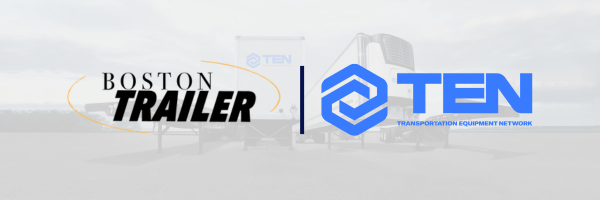Written by
Melanie MarchUnderstanding the Lifecycle of a Trailer: Key Maintenance Milestones
Like any high-performance equipment, trailers endure wear and tear over time. Understanding where and when that wear occurs is essential to ensuring safety, operational efficiency, and long-term asset value.
Below is a breakdown of key maintenance milestones across a trailer’s lifecycle and how proactive maintenance programs can reduce downtime and extend equipment life.
Common Lifecycle Stages & Service Needs
Although usage patterns vary, most trailers follow a predictable maintenance trajectory. Key service intervals include:
1. Early Use (1–3 Years): Establishing a Maintenance Baseline
- Focus: Inspections, lubrication, and minor adjustments
- Typical Tasks: Preventive maintenance inspections, torque verifications
- Why It Matters: Early-stage maintenance establishes proactive habits that help catch issues before they become costly repairs.
2. Mid-Life Wear (4–7 Years): First Signs of Component Fatigue
- Focus: Monitoring high-use systems for early wear
- Typical Tasks: Tire replacements, door alignments, brake replacements
- Why It Matters: Components such as brakes, doors, and air ride systems begin to degrade. Timely intervention prevents failures and unexpected downtime.
3. Long-Term Usage (8–12 Years): Structural and System Integrity
- Focus: Core structural and electrical system health
- Typical Tasks: Floor repairs, corrosion prevention, bushing inspections
- Why It Matters: At this stage, wear impacts the trailer’s integrity. Planned repairs extend usability and avoid major capital investments.
4. Mature Equipment (15+ Years): Reconditioning & Replacement Planning
- Focus: Major refurbishment and lifecycle decision-making
- Typical Tasks: Corrosion remediation, replacement of high-wear components
- Why It Matters: Fleets must evaluate whether to continue investment in older equipment or decommission and replace.
The Role of Preventive Maintenance
Preventive maintenance isn’t about reacting to failures – it’s about avoiding them altogether. Benefits of a structured preventive program include:
- Reduced emergency repairs and roadside breakdowns
- Enhanced safety and regulatory compliance (e.g., DOT inspections)
- Prolonged trailer lifespan
- Controlled maintenance spend with predictable service costs
A proactive strategy includes routine checklists, digital service history tracking, and scheduling based on usage patterns and trailer type.
Conclusion: Managing the Full Lifecycle
Maximizing trailer performance requires aligning service strategies with known wear intervals. Whether managing dry vans, reefers, or specialty trailers, implementing a disciplined maintenance approach ensures cost-effective, long-lasting operation.
Featured
TEN Acquires Boston Trailer, Strengthening Position as Leading Trailer Lessor Across North America

TRENDING ARTICLES
Understanding the Lifecycle of a Trailer: Key Maintenance Milestones

TEN (Transportation Equipment Network) Launches in the Houston Market in Collaboration with Darda Management Group

Emergency Roadside Assistance vs. Full-Service Maintenance for Trailer Leasing: What’s the Difference?
CATEGORIES
TEN
TEN Cool

